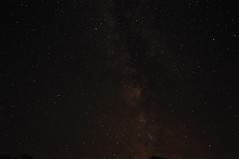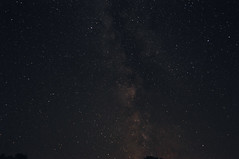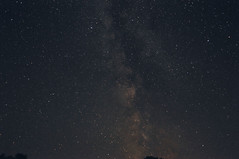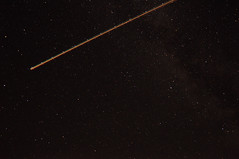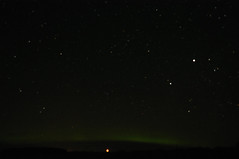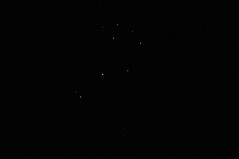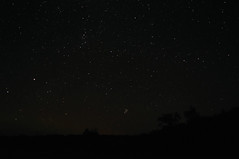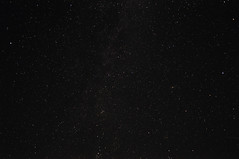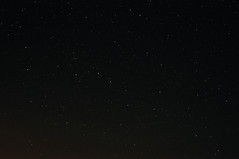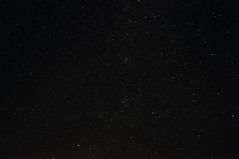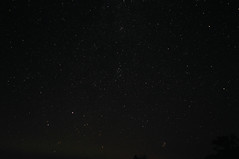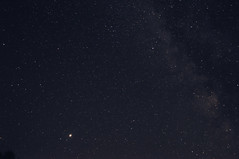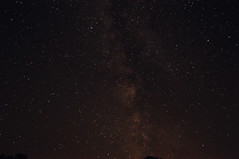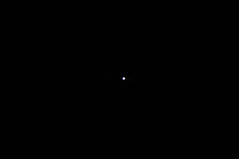I went out to the RASC Saskatoon Centre's dark site a few nights ago to capture some images. The sky was amazingly clear, until the dew started to fall. However, I still managed to snap some neat stuff that I've never photographed before. The night was full of wonderful sights, including Aurora, Jupiter, Milky Way, Andromeda Galaxy, Pleiades, meteors, and a jet airplane.
I tried to upload the images I shot and Blogger completely messed them up, so I've linked the photos below to
my Flickr account, so if you click on a photo, it will go to my Flickr site.
Anyway, I managed to catch some good shots of the Milky Way, including some with meteors streaking through them. I also snapped Jupiter with the Milky Way; the Milky Way with Cassiopeia, the Andromeda Galaxy and a meteor streaking by; Jupiter and the Milky Way, Andromeda and the Pleiades; and the Pleiades with aurora. I also got a jet flying through a Milky Way picture. That was kind of neat.
I should also mention that all of these photos were taken using only a Nikon D90 with an 18-55mm lens on a tripod.
The photo below is of the Milky Way and a meteor streaking by just to the right of center.
Here is the same shot with a little different editing. It hopefully appears lighter.
Here is another attempt at the same photo to edit it so it's brighter.
This photo is photo of the Milky Way with a jet flying through the photo. I thought it was kind of neat.
This photo is of a brief appearance of the aurora.
This is more of a close-up of the Pleiades.
This is a wide angle shot with the Pleiades toward the bottom just to the right of center.
This photo has the Milky Way going down the middle of it, with Cassiopeia in the middle of the picture. The Andromeda Galaxy is to the right of center and about one third of the way from the right side of the photo. It looks like an orangey, fuzzy ball.
This photo has a meteor in it toward the bottom just right of center.
This photo has Cassiopeia in the middle toward the top, with Andromeda to the right of that and a meteor toward the lower left.
This is a wide angle shot with the Pleiades in the lower right.
This photo has Jupiter shining bright on the lower left and the Milky Way on the right side.
Here is the same photo with different editing.
This one has the Milky Way running down the middle with two meteors forming a V about one third from the right side, just above the middle.
This photo is of Jupiter and four of its moons.




















